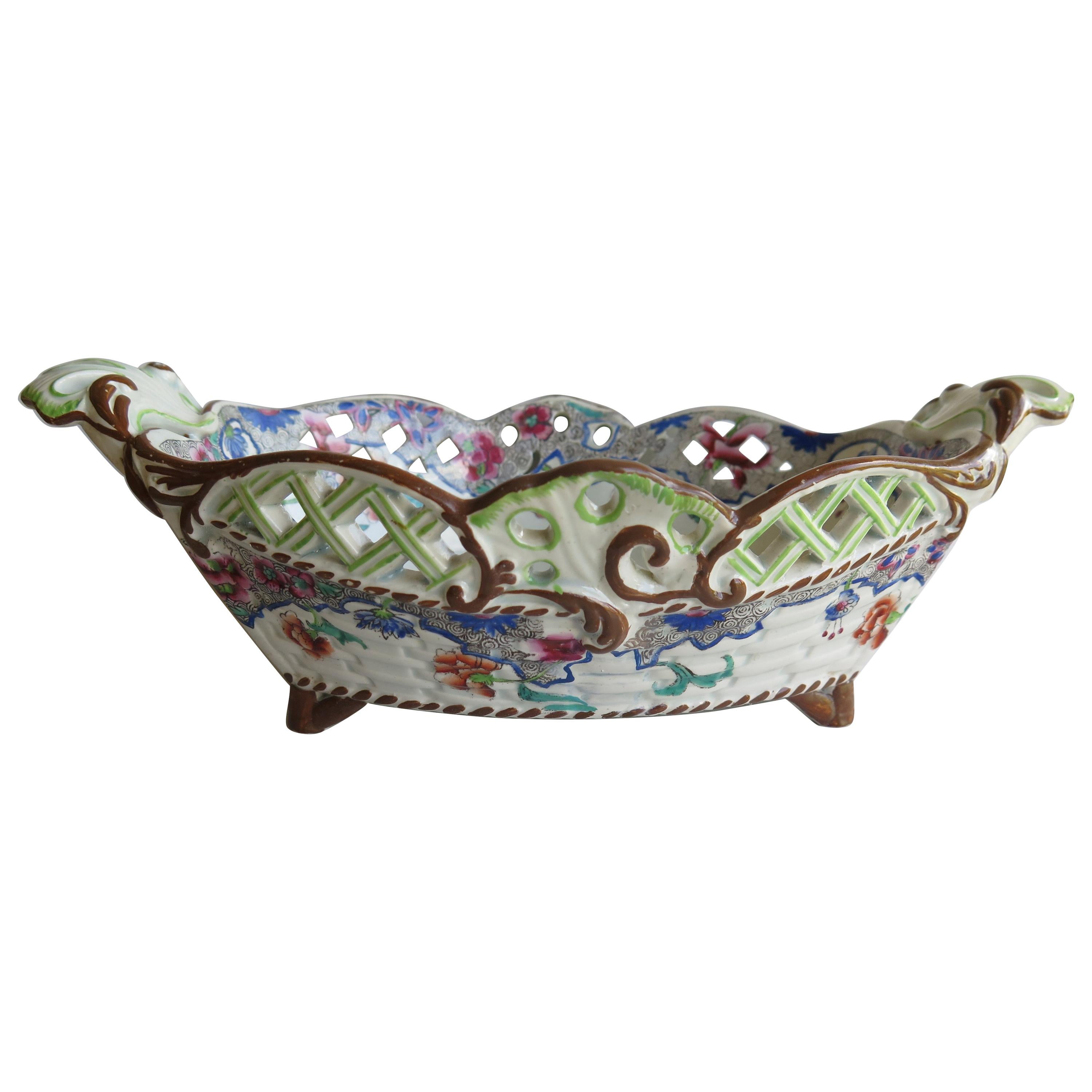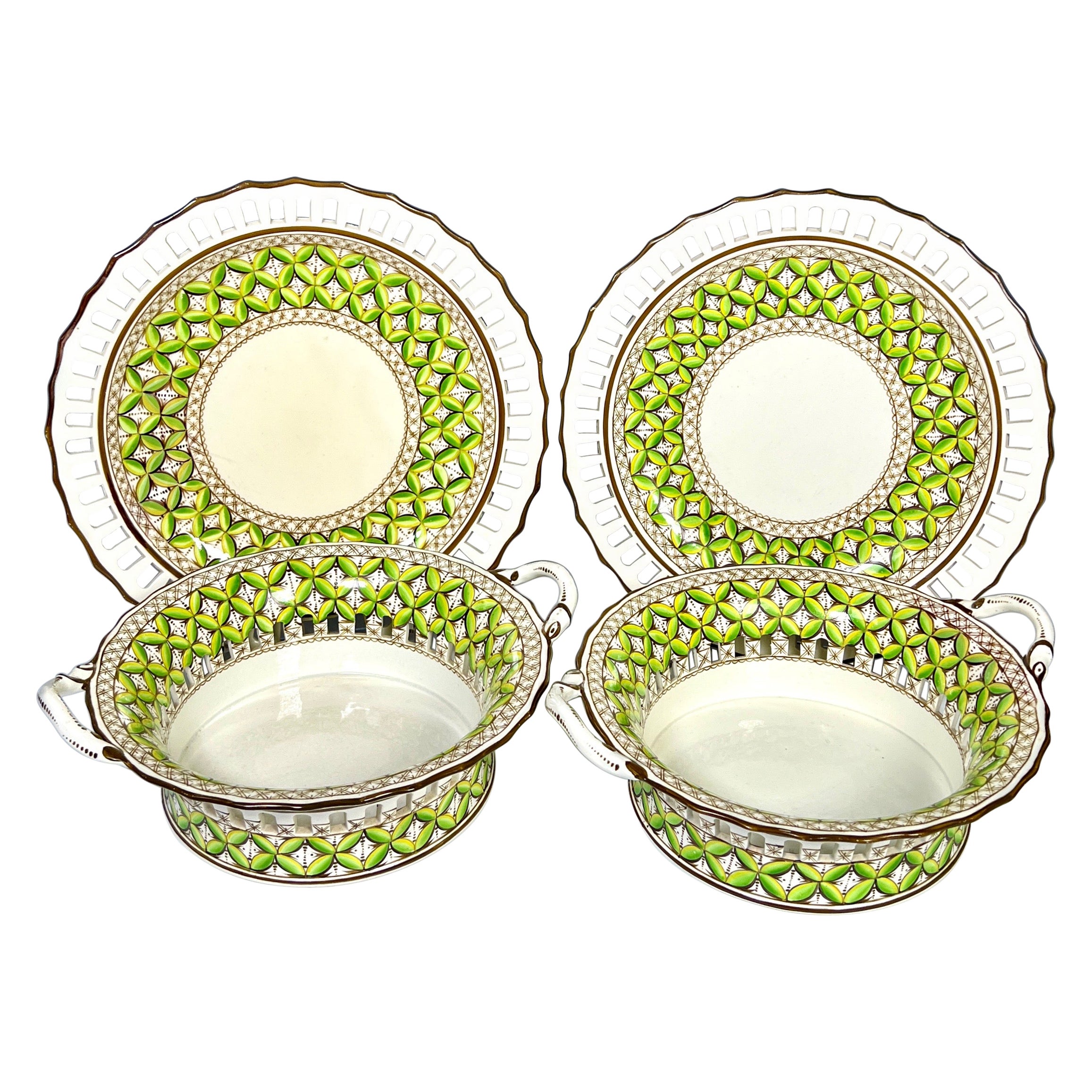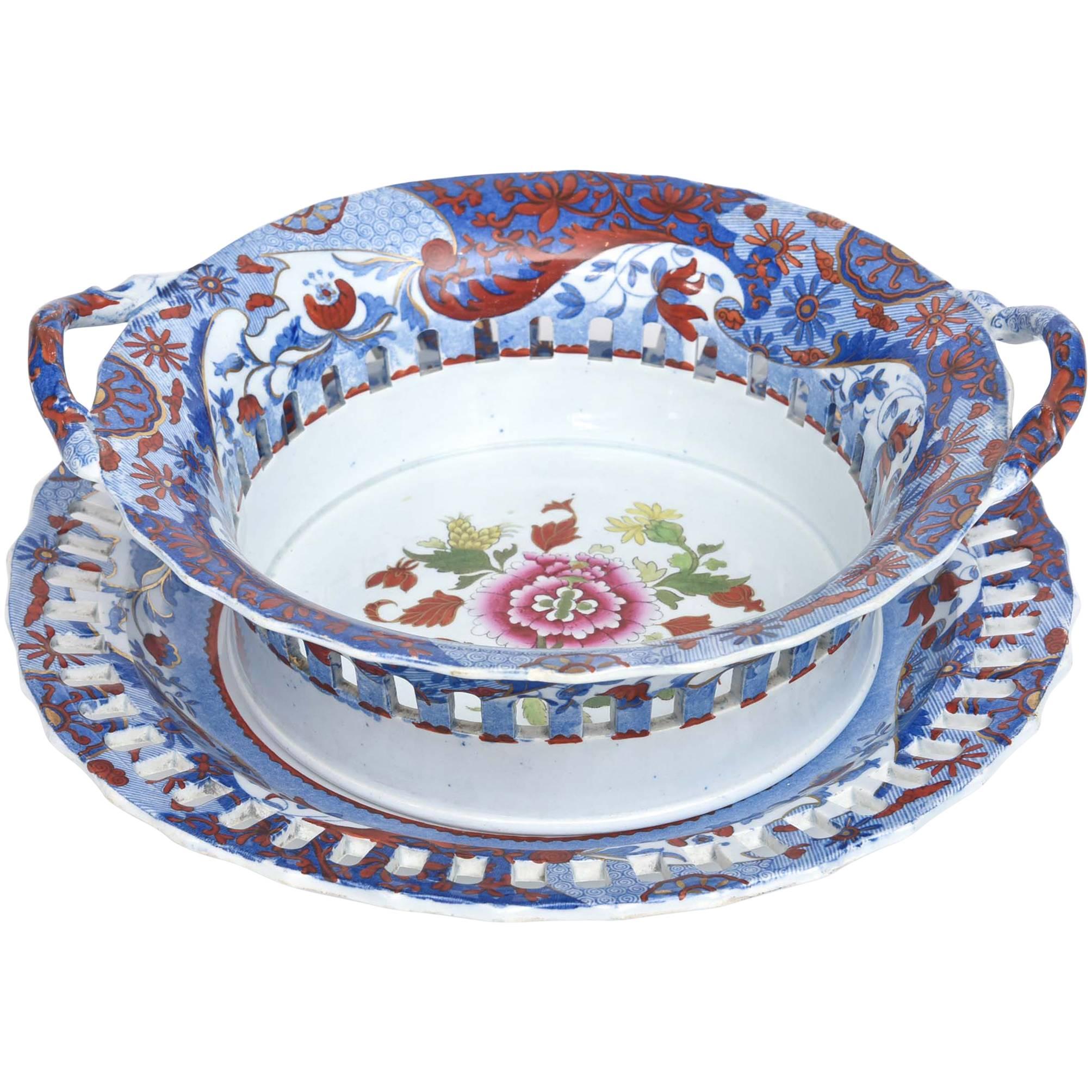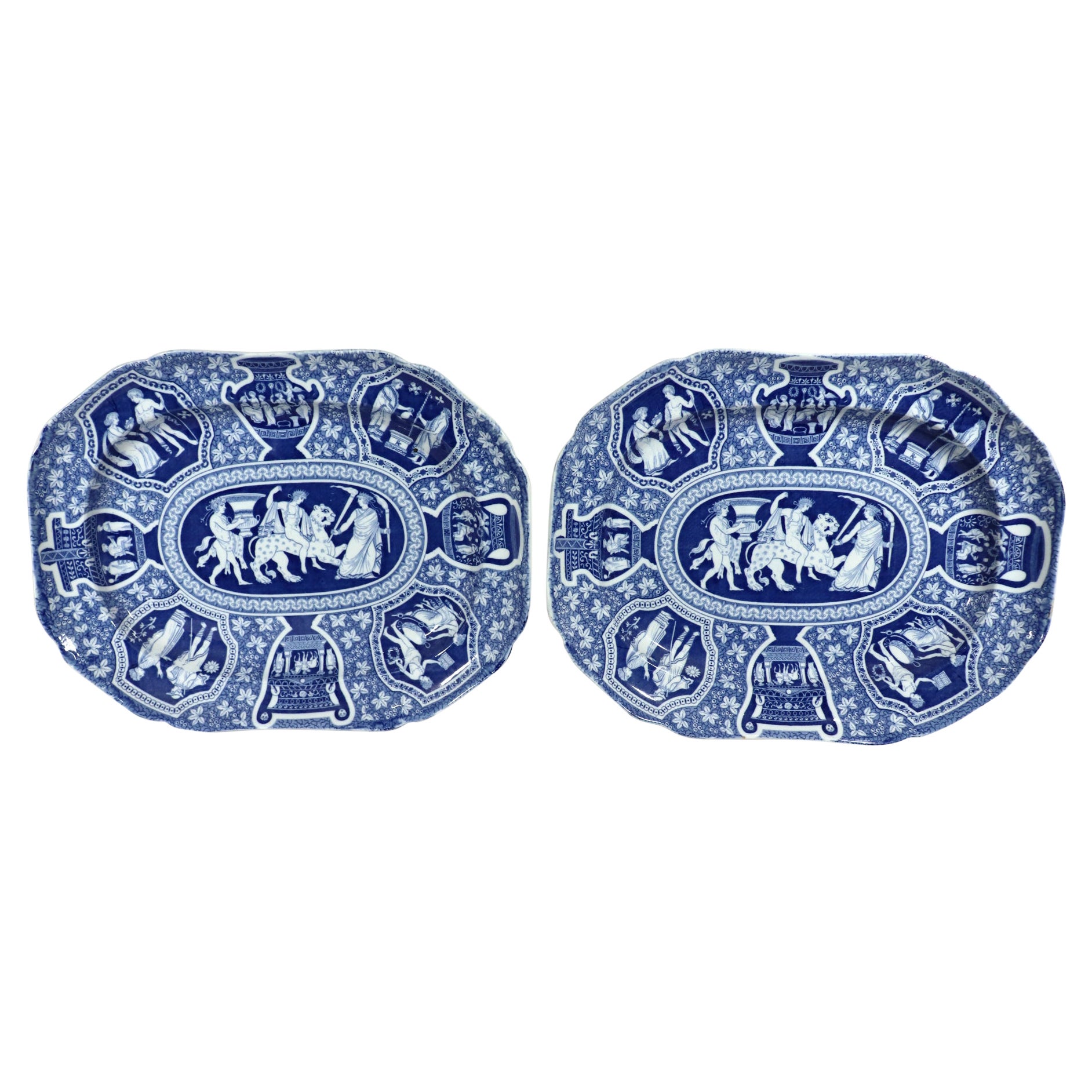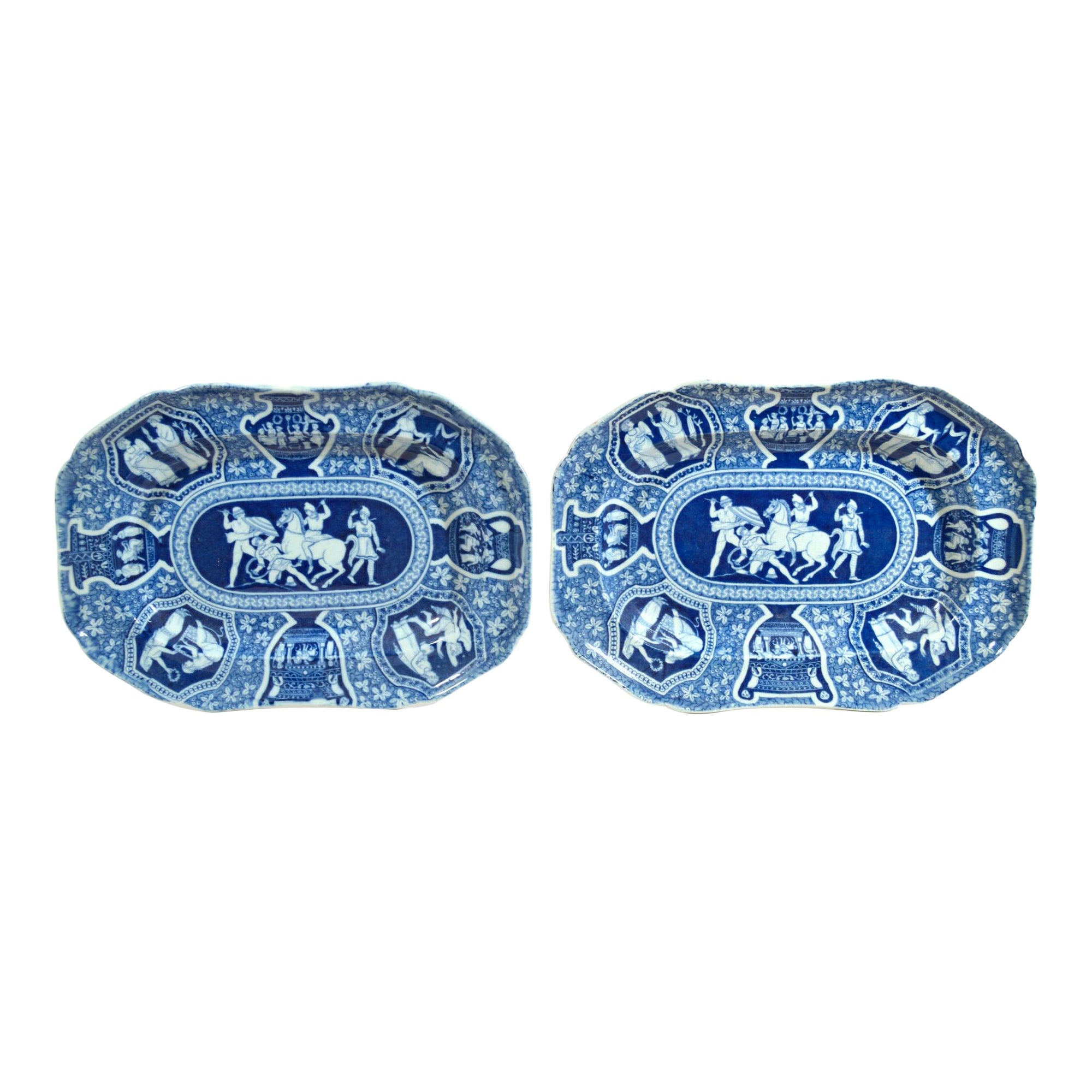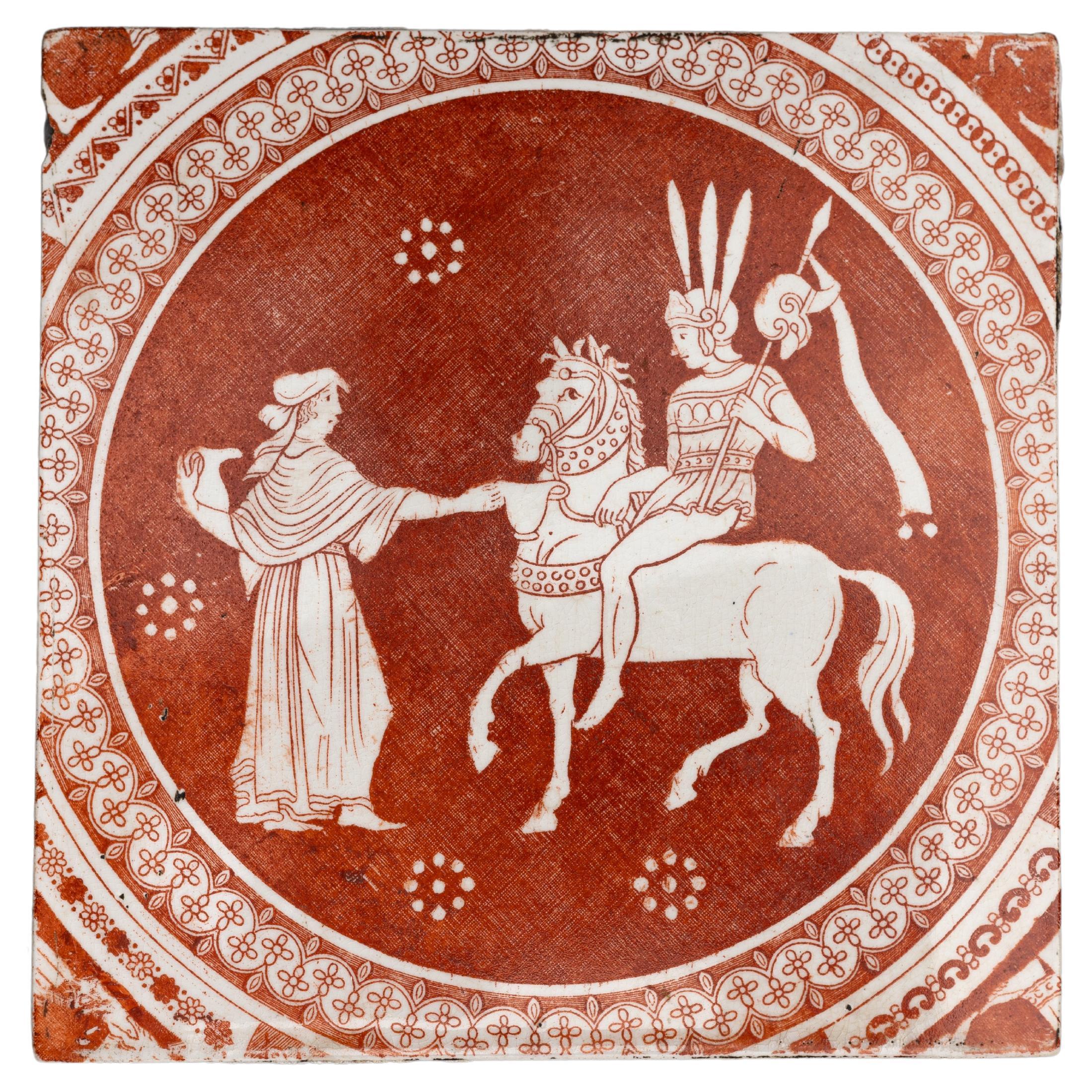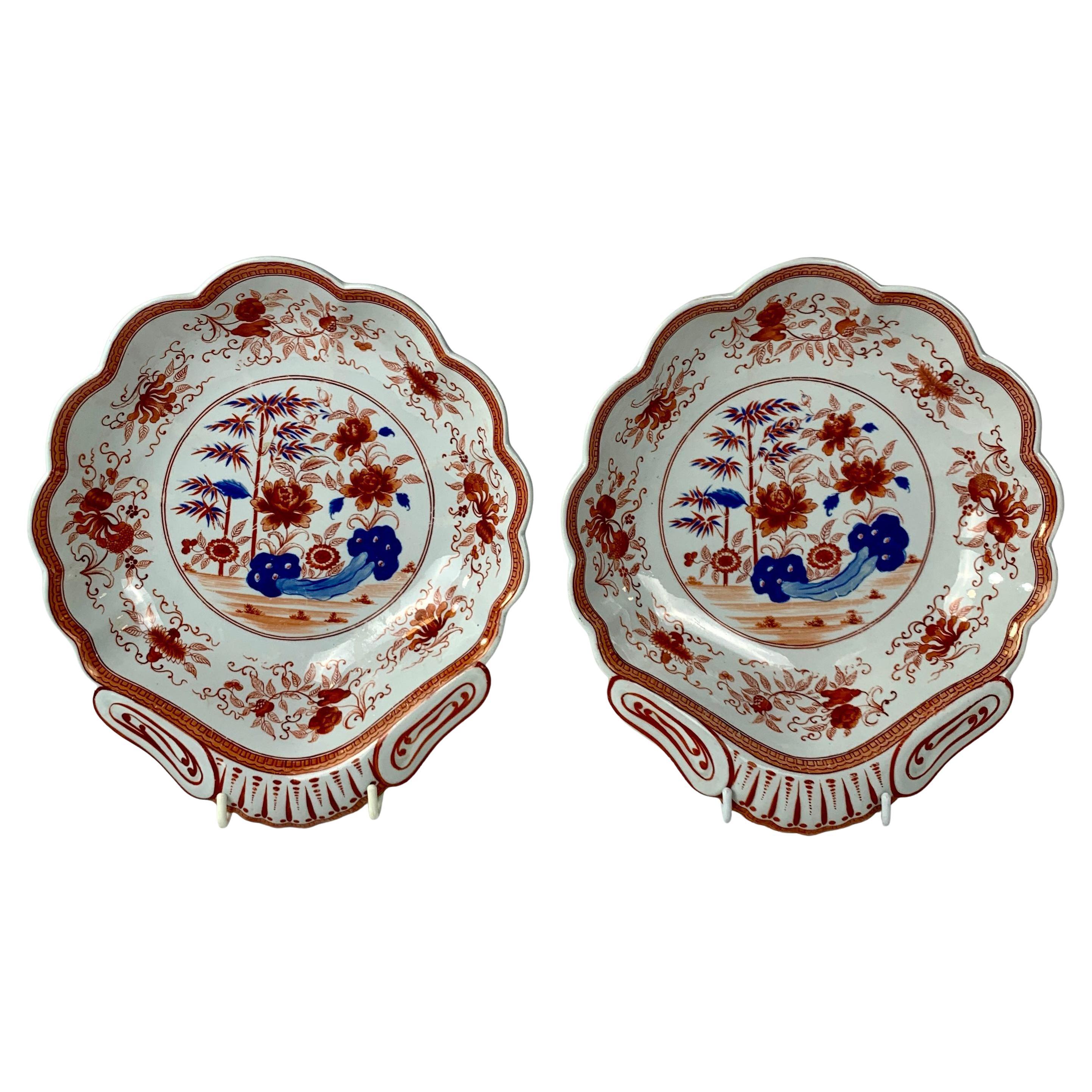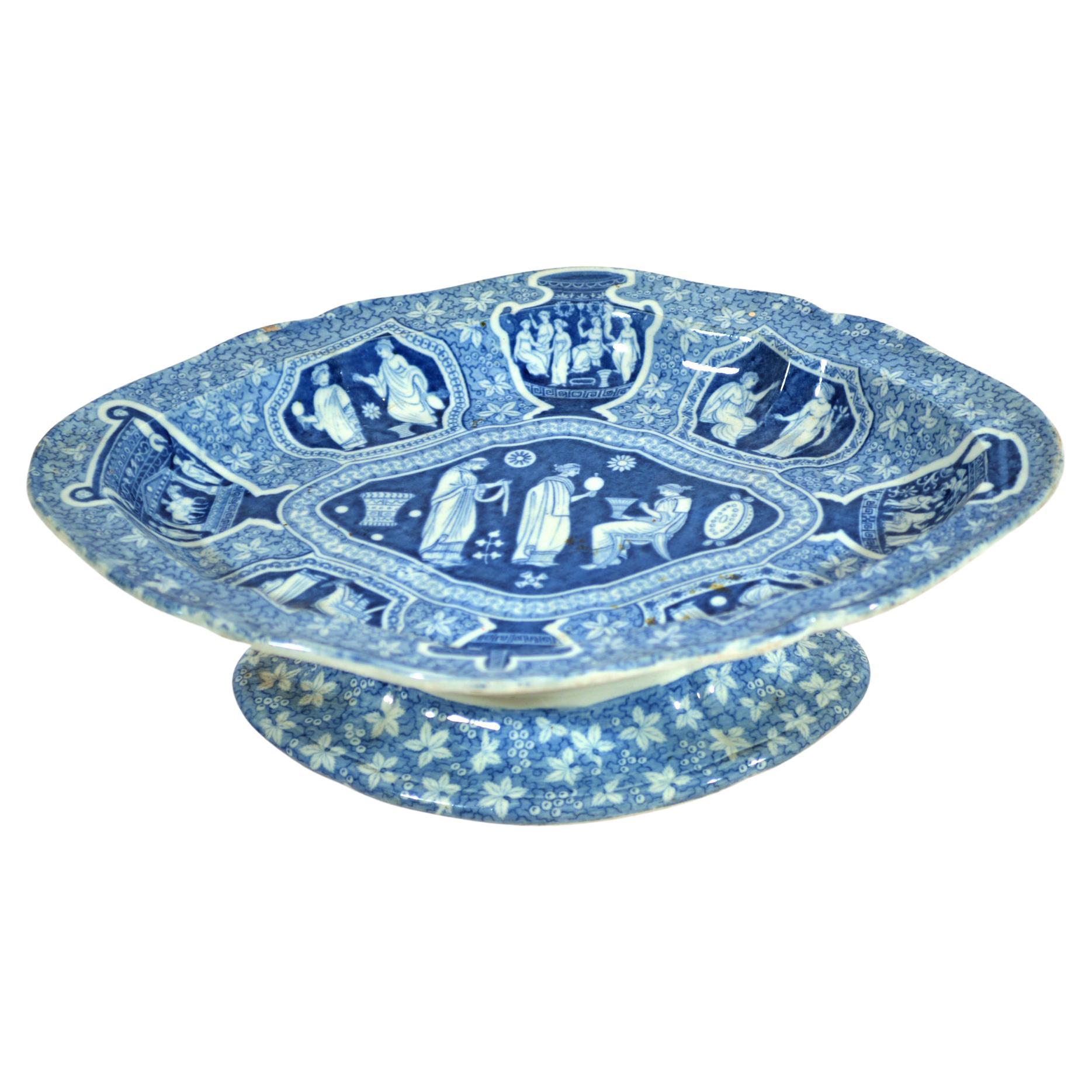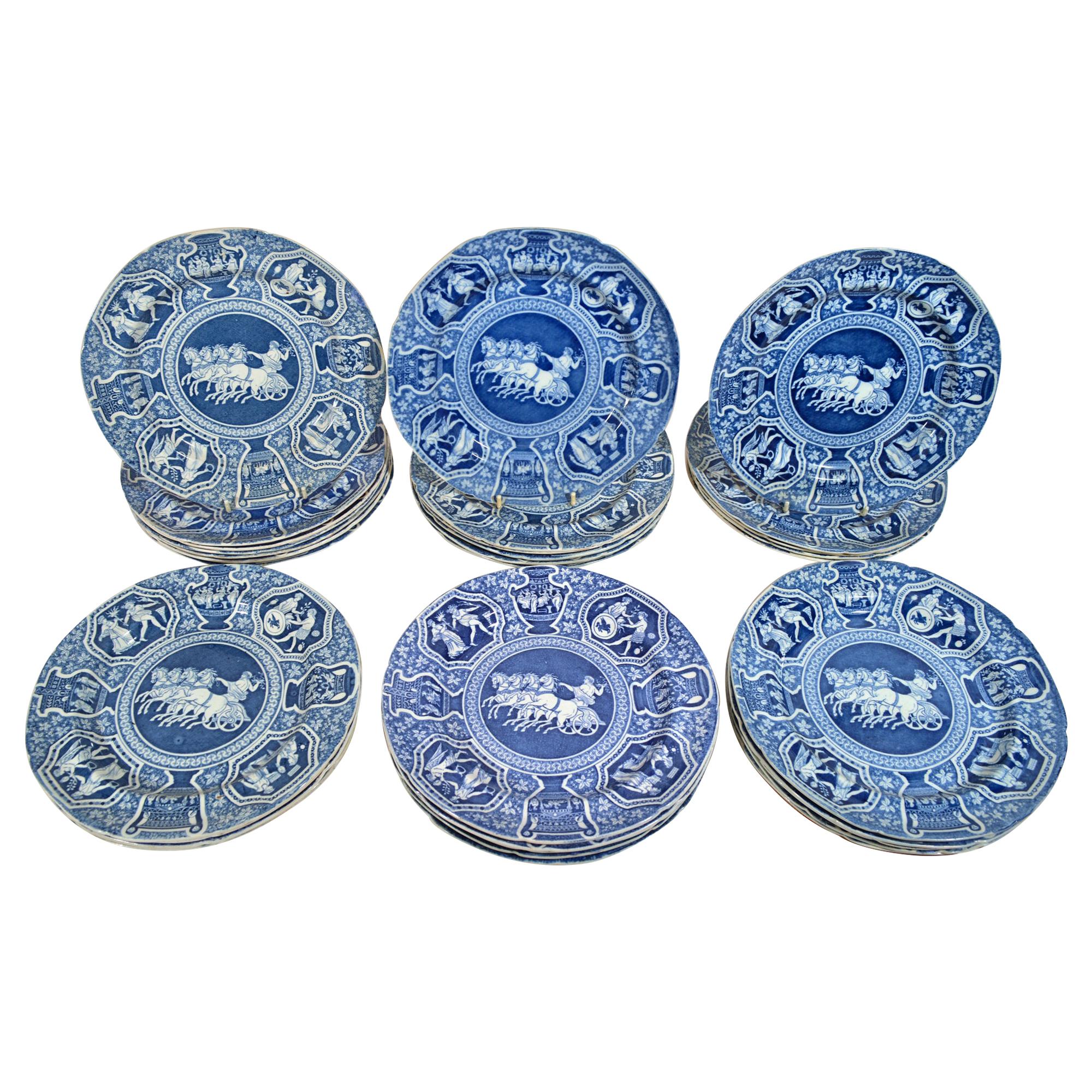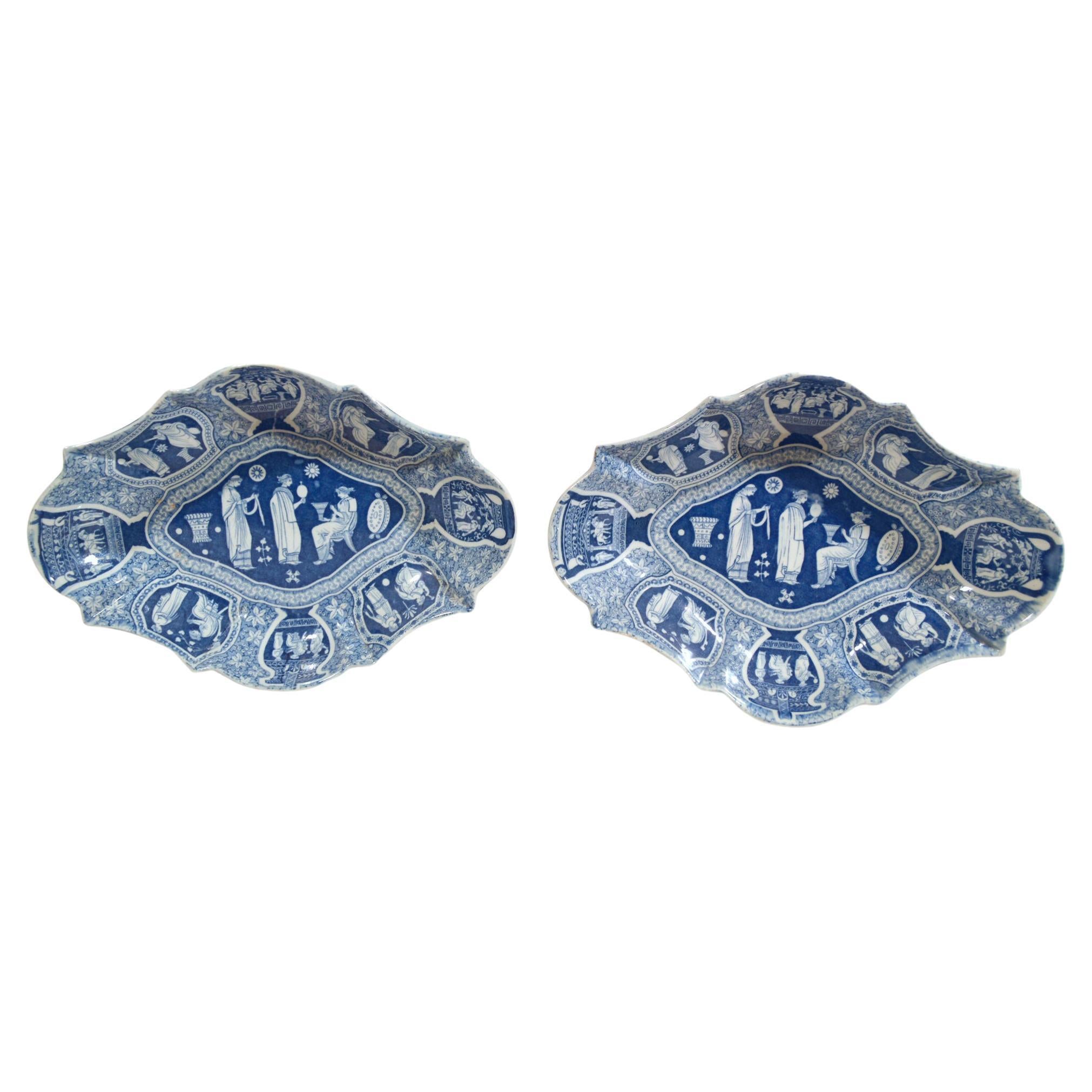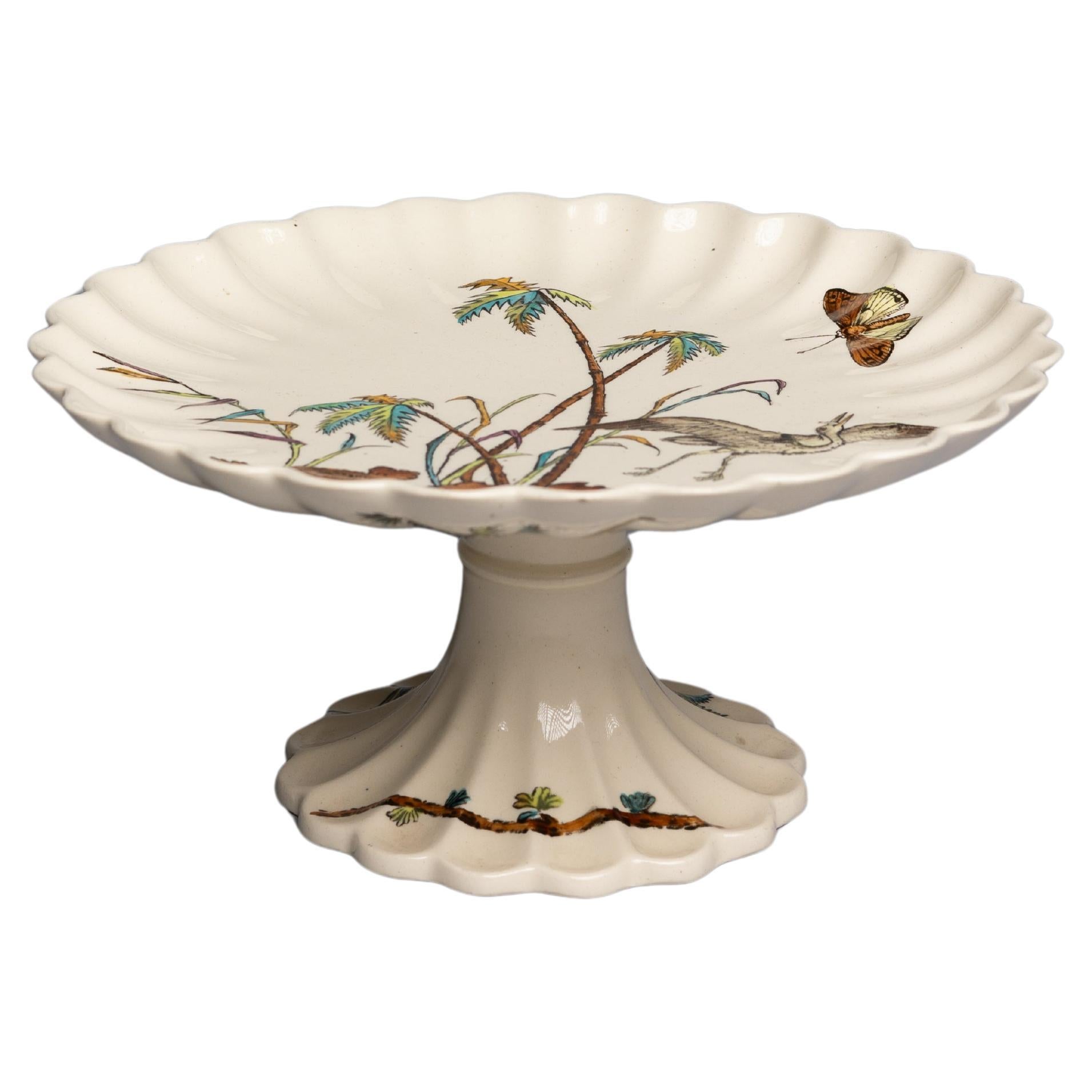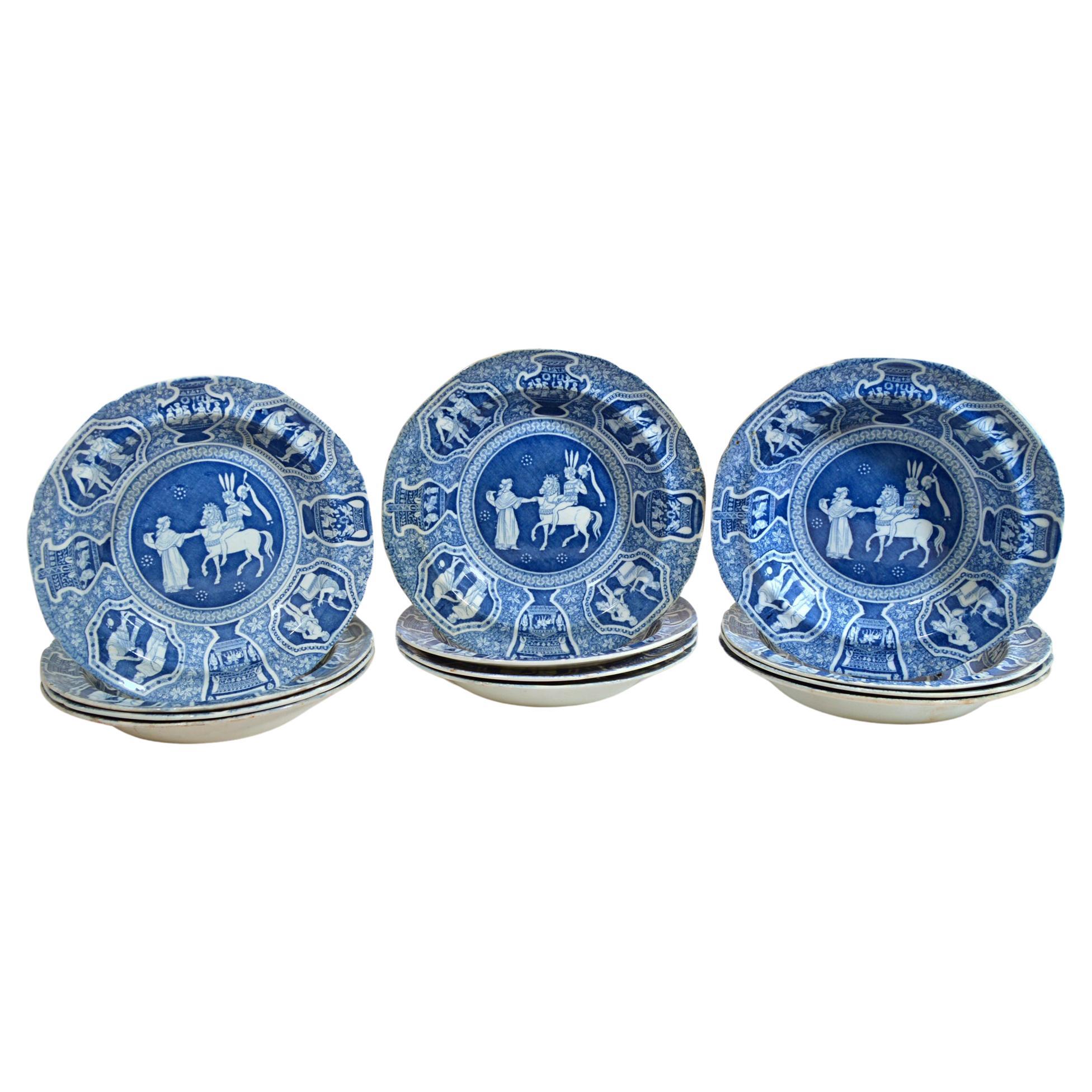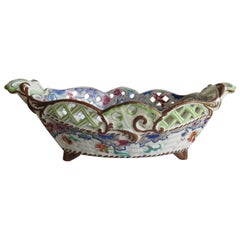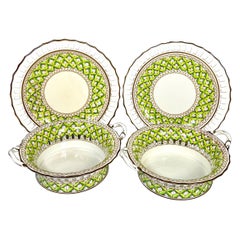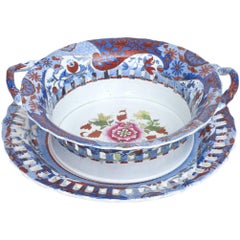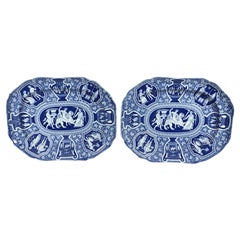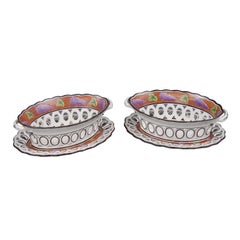
English Pair of Spode Chestnut Baskets
View Similar Items
1 of 6
English Pair of Spode Chestnut Baskets
About the Item
- Dimensions:Height: 3.25 in (8.26 cm)Width: 9 in (22.86 cm)Depth: 6.5 in (16.51 cm)
- Sold As:Set of 3
- Style:Regency Revival (Of the Period)
- Materials and Techniques:
- Place of Origin:
- Period:
- Date of Manufacture:circa 1820
- Condition:Wear consistent with age and use. Very good antique condition.
- Seller Location:Sheffield, MA
- Reference Number:Seller: Item #64281stDibs: U0808028341159
Authenticity Guarantee
In the unlikely event there’s an issue with an item’s authenticity, contact us within 1 year for a full refund. DetailsMoney-Back Guarantee
If your item is not as described, is damaged in transit, or does not arrive, contact us within 7 days for a full refund. Details24-Hour Cancellation
You have a 24-hour grace period in which to reconsider your purchase, with no questions asked.Vetted Professional Sellers
Our world-class sellers must adhere to strict standards for service and quality, maintaining the integrity of our listings.Price-Match Guarantee
If you find that a seller listed the same item for a lower price elsewhere, we’ll match it.Trusted Global Delivery
Our best-in-class carrier network provides specialized shipping options worldwide, including custom delivery.You May Also Like
Early Spode Creamware pottery Pierced Chestnut Basket, English circa 1825
By Josiah Spode
Located in Lincoln, Lincolnshire
This is a rare Creamware pottery Chestnut Basket made by the SPODE factory, Stoke on Trent, Staffordshire, England, in the late Georgian, Regency period...
Category
Antique Early 19th Century English Georgian Ceramics
Materials
Creamware
Pair of Spode 19th C Pierced Green Chestnut Baskets & Under Plates
By Spode
Located in Great Barrington, MA
This pair of rare 19th c Spode Chestnut bowls are in amazing original condition and feature a green enamel leaf motif with pierced border. Each has two handles and basketweave on bot...
Category
Antique 1850s English Regency Revival Porcelain
Materials
Porcelain
Antique English Chestnut Basket or Centerpiece and Underplate, Spode, circa 1820
By Josiah Spode
Located in West Palm Beach, FL
A charming antique English porcelain piece by Josiah Spode, England dating to the first quarter of the 1800s. Hand-cut reticulation on the center bowl and stand/underplate and nicely...
Category
Antique 1820s English Centerpieces
Materials
Porcelain
$746 Sale Price / set
25% Off
Spode Pottery Large Neoclassical Greek Pattern Blue Pair of Dishes
By Spode
Located in Downingtown, PA
Spode pottery neoclassical Greek pattern blue pair of dishes,
Bacchus Mounted on a Panther,
Early-19th century
The Spode Greek pattern pottery sha...
Category
Antique Early 19th Century English Neoclassical Platters and Serveware
Materials
Pearlware, Pottery
Regency Period Spode Neo-classical Greek Pattern Blue Dessert Dishes- a Pair
By Spode
Located in Downingtown, PA
Regency Spode neo-Classical Greek pattern blue rectangular dessert dishes,
Four figures in battle,
Early 19th century
The Spode Greek pattern pott...
Category
Antique Early 18th Century English Neoclassical Pottery
Materials
Pearlware, Pottery
Early Spode Red Greek Pattern Tile
By Spode, Josiah Spode
Located in Fort Lauderdale, FL
A Neoclassical red transferware tile made by Spode 1806-1810, with the ‘Refreshments for Phliasian Horseman’ pattern.
Sir William Hamilton’s Collection of Etruscan, Greek and Roman antiquities, first published in 1766 by Pierre d’Hancarville, was a landmark publication in English design. It intended to disseminate the Antique style through its engravings of Attic pottery. The catalog’s faithful reproductions of Classical vases led British potteries, including Spode, to adapt or even copy the ancient art for modern life. These Spode Greek pattern tiles reflect the major influence of Hamilton’s catalog on English Neoclassicism. The central scene was taken directly from the catalog.
This tile can be dated to a narrow window of production in the Spode factory, 1806-1810. During that time, Spode used a technique known as the “Pluck and Dust” method to print in red transfer designs onto creamware. Using this method, source prints were transferred overglaze using tissue imprinted with a very faint rendition of the design outlined in sticky oil. The decorator applied the tissue to the object then carefully “plucked” or pulled it away, leaving the sticky oil design behind. Then, a finely-ground enamel color was “dusted” onto the surface, sticking to any areas that had the oil. A final firing at a low temperature in the enamel kiln made the pattern permanent. The Pluck and Dust technique improved upon bat-printing and enabled larger designers to be transferred. It was short-lived, however, as under-glaze transfer printing soon took over as the preferred method for producing transferwares.
Dimensions: 5 in. x 5 in. x 1/4 in.
Condition: Excellent. Slight chip to the upper left corner measuring approximately 0.9 cm. in length.
Provenance:
The Collection of Nancy and Andrew Ramage
Jonathan Horne...
Category
Antique Early 19th Century English Neoclassical Pottery
Materials
Earthenware, Creamware
Recently Viewed
View AllMore Ways To Browse
Antique Chestnut Baskets
Copper Fish Pan
Copper Flagon
Copper Lustre Jug
Copper Zodiac Wall
Coracle Bench
Coral Color Nightstand
Coral Desk Lacquer
Coral Foo Dog
Coral Red Glaze Gilt Porcelain
Corbeille Bed
Corbin Bronze Table
Corbu Bedside Table By Demuro Das
Corbu Bedside
Corbusier Taureau
Coromandel 4 Panel Screen
Coronation Of A King Tapestry
Couroc Roadrunner Tray
